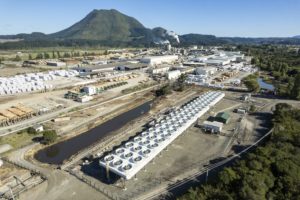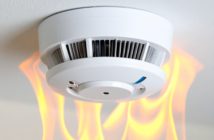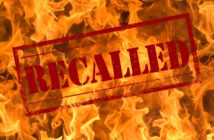A gas detection system installed at a power station in Kawerau is being hailed by Fire and Emergency New Zealand (FENZ) as an exemplar of its kind

The way that the gas detection system at Eastland Generation’s Tarawera One power station in Kawerau is installed provides superior coverage of high-risk areas on-site, resulting in the highest likelihood of a leak being detected, says FENZ National Flammable Liquids & Bulk Fuel Advisor, Denis O’Donoghue.
“Early warning and detailed information about the location and size of a leak are critical to the safety of our crews when responding to an alarm at any facility with flammable gas or liquids in bulk.’
O’Donoghue says Fire and Emergency New Zealand would encourage others in the sector to take a leaf out of Eastland’s book.
The energy company operates three binary geothermal power stations located in Kawerau in the Eastern Bay of Plenty. The power station sites are designated as Major Hazard Facilities (MHFs) due to the use of pentane which is a flammable hydrocarbon that is present as both a liquid and a vapour when the power plant is in operation.
A leak of pentane has the potential to escalate and lead to events with significant consequences. Therefore, the capability to detect and quickly respond to a leak is an essential component of the safety and protection system at the facility.
Bevan Lange, Safety Engineer at Eastland Generation says all of Eastland’s power stations are equipped with gas detection systems which is standard industry practice at binary geothermal facilities.
‘These systems are designed to provide early detection and warning and can initiate process shutdowns in the event of a leak from the closed pentane system. Gas detection systems are recognised as an effective means of reducing the risks associated with the operation of these major hazard facilities (MHFs).
‘The Eastland Tarawera One power station was purchased by Eastland Generation in 2022. When we took over the facility’s operation, the site was equipped with a gas detection system, however this system was nearing the end of its service life. During the development of the safety case for the plant, we conducted a safety assessment, which identified the opportunity to further reduce risk at the facility through improvements to the gas detection system.’
Bevan says developing and installing a new gas detection system rather than upgrading the existing equipment allowed the team to design a system that represented best industry practice and significantly reduced operational risk at the facility.
‘We elected to develop the specification for the gas detection system in-house, using the skills and experience of our in-house engineering team. The team developed risk studies to identify areas at the facility where gas leaks are most likely to occur and, using information gathered during these studies, we identified the most suitable locations for the installation of detectors.
‘Alongside the detector layout plan, the team also developed the plan for the site evacuation beacons and sounders. The placement of these items ensures that the site evacuation signals are visible and audible from any location on-site and the site entry points. The system is designed to activate alarms signalling a site evacuation and can initiate the shutdown of plant systems associated with a detected leak. Integrating the gas detection system with the plant control system is an additional control measure that further reduces risk at the facility.’
Bevan says the facility is operated remotely from a permanently staffed control room at the Te Ahi O Maui facility where the operation is monitored 24/7. If a gas leak is detected at the facility, the gas alarm system can automatically initiate a site evacuation and alert the plant duty operator of the problem.
‘The alarm system can quickly identify the affected site and the exact location of the leak, allowing the plant operator to provide this information to emergency services. The number and location of detections can also give a good indication of the size of the leak and extent of the resulting vapour cloud. The alarm system index panel at the site entrance also identifies the location of the detectors that have been activated, helping to ensure that personnel entering the site are alerted to the hazard before approaching the plant.’
Denis O’Donoghue stresses that early warning and detailed information about the location and size of a leak means Fire and Emergency crews can then approach safely and anticipate the hazard, as well as being able to pinpoint the source of the leak and determine the extent of the area affected more accurately.
‘In the bigger picture, an approach based on risk-based placement of gas detection, consistent executive actions upon detection, standardised protocols for notifying emergency services and the ability to provide detailed location-specific information on the presence of flammable or toxic gas to our crews en route and upon arrival, is invaluable to us. We can be more confident that our people are not exposed to unforeseen hazards, can appraise the situation they are dealing with more quickly and act accordingly.’
Gavin Travers, National Manager, Fire and Emergency National Communications Centres who respond to 111 calls and dispatch fire trucks, agrees.
‘When Fire and Emergency responds to a private fire alarm (PFA), if the panel provides information to our Communications Centre and then on to responders that provides a “picture” of what may be happening on site, that intelligence would add value for the incident controller.
‘For example, take a high-rise building where the smoke detector goes into alarm on level 9 of the northern corner. Traditionally we receive an alarm activation for the PFA but don’t always know at the time of turnout where the activation has occurred. Opening up this data means we could now know the smoke detector is on Level 9 in the Northern Corner. This helps the incident controller consider tactics. Should further activations occur on the same floor then this might indicate it is a working job. If the detector resets and goes back to normal, then potentially it is a false alarm situation.’
Nick Dawtry, Deputy Chief Inspector, Petroleum and Geothermal Extractives, High Hazards, Energy and Public Safety at Worksafe says having a gas detection system that has an appropriate level of coverage, and that can perform executive (automatic) actions on detection of flammable or toxic gas like the one at Tarawera is considered best industry practice.
‘Modern gas detection systems are scalable which means the level of coverage and complexity can be matched to the magnitude of the potential risks presented on a site. These systems can be easily integrated with control systems.
‘Undertaking a thorough safety assessment is key for identifying appropriate control measures. In Eastland’s case their safety assessment was undertaken as part of the safety case development for the facility and the requirement to reduce risks so far as is reasonably practicable (SFAIRP).’
Denis believes the ideal would be for a standardised approach across industry to gas detection on these and similar facilities (such as LPG storage).
‘We can train our crews and our Communications Centre personnel in what to expect, knowing the information we receive from plant operators about what is happening is clear and consistent, rather than having different detection systems, alarm indications, and operator actions across different facilities and operators.’
The use of gas detection systems is well established in New Zealand says Bevan, and systems can be developed using in-house expertise or with the assistance of specialist organisations experienced in designing and implementing these systems.
‘Eastland Generation will continue to develop and enhance the detection systems at all the organisation’s operational sites, and gas detection will be included in the design for all new plants in the future.’



